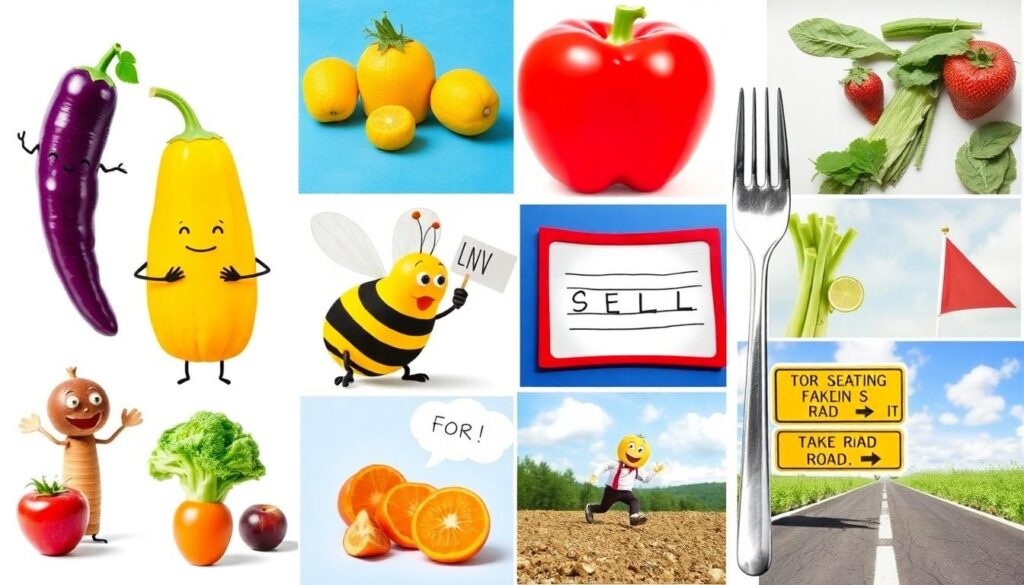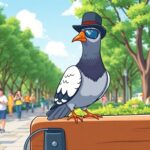We’ve all heard the saying “a picture is worth a thousand words,” but what about a picture that makes you laugh? Picture puns combine visual elements with clever wordplay to create humor that sticks with you long after you’ve scrolled past. They’re the perfect blend of wit and imagery that our brains can’t help but appreciate.
In today’s social media-driven industry, picture puns have become an art form of their own. From advertising campaigns to viral memes, these visual jokes capture attention and drive engagement like few other content types can. We’ll explore how these clever visual jokes work, why they’re so effective, and share some of the best examples that have taken the internet by storm.
10 Hilarious Picture Puns That Will Make You Laugh Out Loud
- The “Lettuce Turnip the Beet” – This popular food pun features images of lettuce, a turnip, and a beet arranged side by side. When read aloud, it sounds like “Let us turn up the beat,” making it a favorite among foodies and music lovers alike. The clever combination of vegetables creates an instantly recognizable visual joke that works on multiple levels.
- “Star-bucks” – A visual gag showing deer (bucks) with star patterns on their bodies. This clever play on the coffee chain’s name typically features actual male deer decorated with star shapes, creating a literal interpretation of the famous brand that coffee enthusiasts can’t help but chuckle at.
- “Spelling Bee” – This adorable pun shows a bee holding a dictionary or spelling out words. The literal depiction of an insect engaged in a spelling competition transforms the common phrase into a charming visual joke that appeals to language lovers and entomologists equally.
- “Fork in the Road” – A classic visual pun depicting an actual fork utensil stuck in the middle of a road or pathway. This literal take on the common expression perfectly illustrates how picture puns transform metaphorical language into concrete images for comedic effect.
- “Pi-rat” – An image showing a rat holding or wearing the mathematical symbol π (pi). This mathematical rodent combines numerical humor with animal imagery, creating a delightful visual joke that especially resonates with those who appreciate both science and wordplay.
- “Rock Paper Scissors” – This clever visual shows a rock wearing paper clothing while holding scissors. The literal interpretation of the game transforms the abstract concepts into concrete characters, creating a narrative-based joke that adds personality to familiar objects.
- “Holy Cow” – A picture featuring a cow with halo or angel wings, representing the common exclamation in a literal form. This divine bovine transforms a casual expression of surprise into a visual gag that plays with religious imagery in a lighthearted way.
- “Cereal Killer” – A spoon “attacking” a bowl of cereal or a person menacingly holding breakfast cereal. This macabre yet playful pun transforms a dark phrase into something completely innocent through visual recontextualization, showcasing the unexpected humor picture puns can create.
- “Super Bowl” – Instead of the famous football championship, this pun shows an actual bowl wearing a superhero cape. The juxtaposition between the expected sporting event and the heroic dishware creates an immediate disconnect that triggers laughter through subverted expectations.
- “Time Flies” – A visual gag showing clocks or watches with wings, literally depicting the common saying about time passing quickly. This whimsical interpretation adds a physical dimension to an abstract concept, capturing the essence of how picture puns transform language into tangible humor.
Why Picture Puns Are Taking Over Social Media
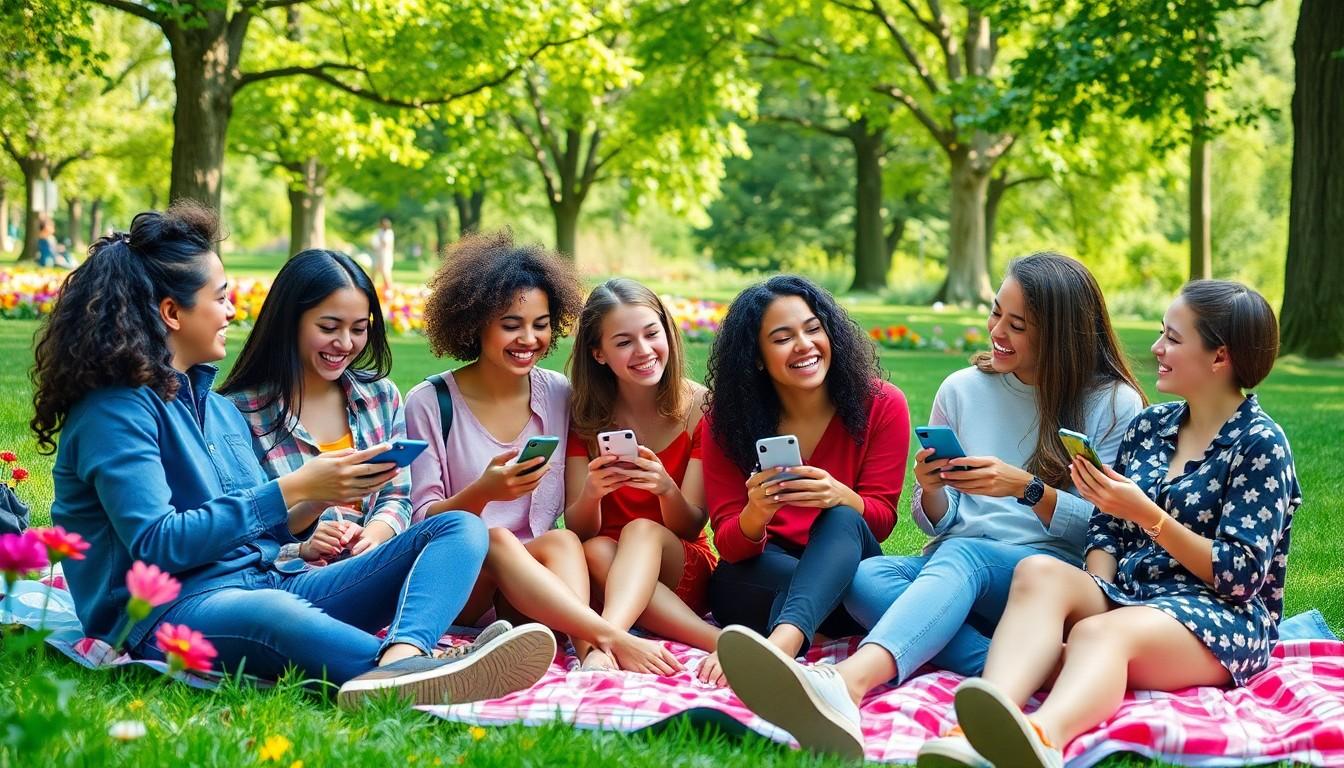
Picture puns have surged in popularity across social media platforms, combining visual elements with clever wordplay to create content that’s both memorable and shareable. This unique form of humor has found its perfect home in today’s visually-driven social industry.
The Psychology Behind Visual Humor
Visual humor resonates with audiences on a deeper level than text alone. Our brains process images more efficiently than words, making picture puns instantly impactful and easier to understand. These visual jokes create common ground through shared experiences, helping foster online communities where people connect through laughter. When we encounter a clever picture pun, it often requires a moment of mental processing—that “aha!” moment when we get the joke delivers a small dopamine reward, making the experience more memorable and enjoyable. Visual content sticks in our memory longer than text alone, which explains why we’re more likely to remember and share picture puns we’ve encountered online.
How Picture Puns Boost Engagement
Picture puns drive exceptional social media engagement for several compelling reasons. They stand out dramatically in crowded feeds filled with serious content and life-affirming quotes, offering a refreshing break that captures attention immediately. Platforms like Instagram and Tumblr provide ideal environments for picture puns to thrive, with accounts like punnypixels gaining substantial followings through their creative visual wordplay. Laughter serves as a powerful engagement tool—when users find content funny, they’re significantly more likely to like, comment, and share it with their networks. The creative and playful nature of picture puns encourages audience interaction, as people tag friends who might appreciate the humor or add their own pun variations in the comments. This sharing behavior extends the content’s reach organically, connecting with broader audiences through universally appreciated humor.
Classic Types of Picture Puns To Try
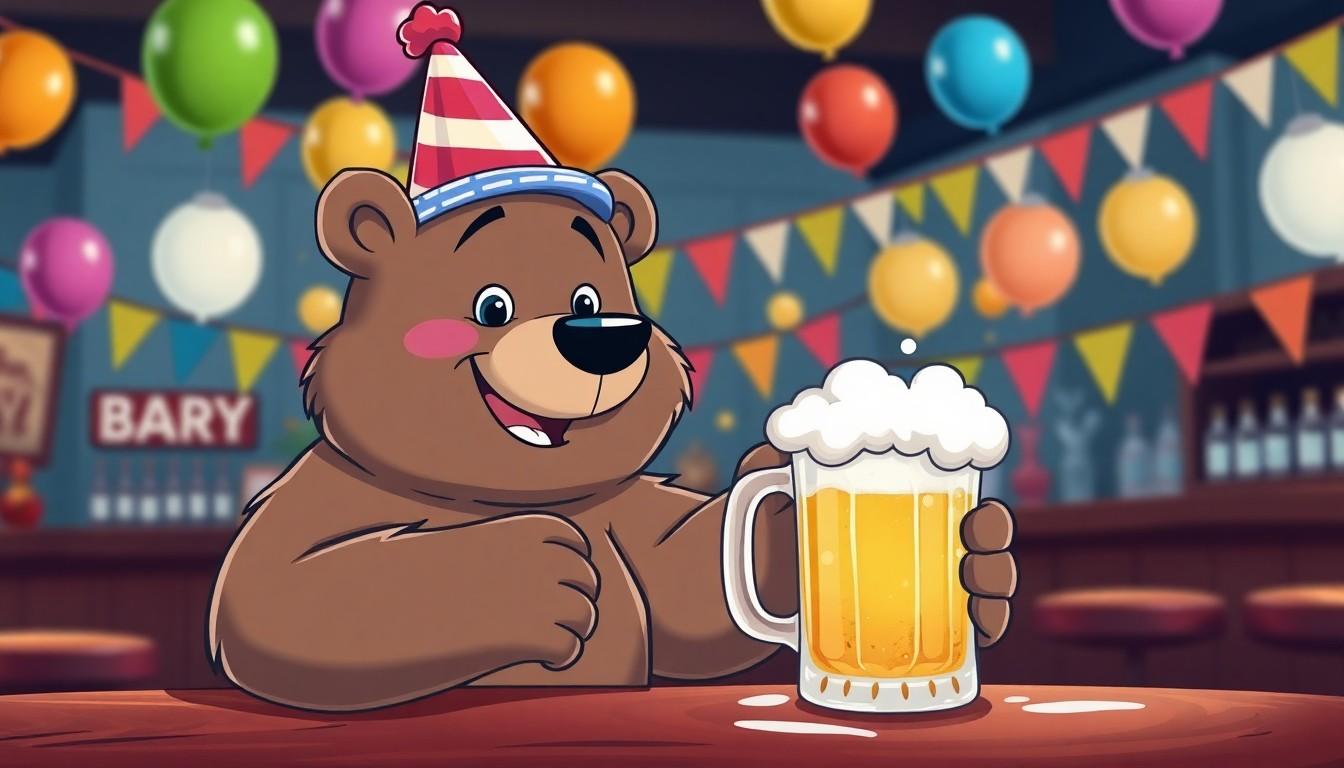
Picture puns come in various forms, each utilizing different linguistic and visual techniques to create humor. Here are the classic types you can experiment with in your own creative projects.
Paronymy Picture Puns
Paronymy picture puns play with words that sound similar but have different meanings. These puns pair an image with text that creates a sound-alike joke. For example, a picture of a bear at a bar could be captioned “The right to beer arms,” playing on the similar sounds of “bear” and “bare” while visually representing both concepts simultaneously.
Homophony Humor
Homophony puns leverage words that sound identical but have different meanings and spellings. These picture puns often require both text and image to complete the joke. A classic example might be a picture of a knight in shining armor saying “goodnight,” using the visual of a “knight” to play off the sound of “night” in “goodnight.”
Homonymy Highlights
Homonymy picture puns use words that are spelled the same but have different meanings. The visual element clarifies which meaning is being played with. For instance, a picture of a literal “bat” (animal) holding a baseball “bat” creates a simple but effective homonym pun that works purely through visual representation.
Metaphorical to Literal Shifts
These picture puns create humor by shifting between metaphorical and literal interpretations. They often take figurative expressions and represent them literally through images. A visual of an actual “fork in the road” (a utensil placed on a street) plays with our expectation of the common expression meaning “a decision point.”
Word-Image Combinations
Word-image combinations in picture puns create meanings that neither element could achieve alone. These puns rely on intersemiotic complementarity where text and images work together to form a cohesive joke. The verbal component might provide one interpretation while the visual offers another, creating a clever intersection of meanings. For example, the text might say “I’m feeling blue” paired with an image of someone painted blue, combining emotional and literal interpretations.
Visual Double Meanings
Visual double meanings require mental elaboration from viewers to fully appreciate the pun. Research shows that viewers integrate verbal and non-verbal information to understand these complex jokes. Eye-tracking studies reveal that people typically spend more time reading the text before examining the image in these polycode puns. This process of mental integration creates a moment of delight when the viewer “gets” the joke by connecting both elements. For instance, a picture of a fish wearing a crown labeled “King of the Sea” creates a visual pun that plays on royal imagery and aquatic life.
Creating Your Own Picture Puns

Ready to create your own visual wordplay? Creating picture puns can be a fun way to express creativity while making others laugh. The process involves thoughtful wordplay combined with strategic visual elements to deliver a humorous punch.
Tools and Apps for Pun Creation
Bringing your pun ideas to life requires the right digital tools. Graphic design software like Adobe Photoshop, Illustrator, and Canva offer comprehensive features for creating professional-looking picture puns with precise control over visual elements. These platforms provide templates, fonts, and editing capabilities that make even complex visual jokes achievable.
Mobile apps present convenient options for on-the-go pun creation. PicsArt, Snapseed, and Pixlr allow you to manipulate images, add text overlays, and blend multiple pictures directly from your smartphone or tablet. These user-friendly applications make visual humor accessible to creators regardless of design experience.
Infographic tools offer another avenue for picture pun development. Platforms such as Piktochart and Easel.ly provide structured layouts and visual elements that help organize your pun concepts into clear, captivating formats. These tools excel at combining textual and visual components in a balanced, professional presentation.
Design Tips for Maximum Impact
Clarity stands as the foundation of effective picture puns. Your visual elements should be immediately recognizable, with clean lines and uncluttered compositions that communicate the joke without requiring extensive explanation. A confusing image will undermine even the cleverest wordplay.
Contrast helps direct viewer attention to the key elements of your pun. Using complementary colors or varying brightness levels makes important components stand out from the background. This visual hierarchy ensures viewers immediately grasp the essential parts of your joke.
Simplicity enhances the impact of picture puns significantly. Focus on one central concept rather than trying to incorporate multiple jokes or references. Historical examples from heraldry demonstrate this principle well, as canting arms used straightforward visual representations directly related to the bearer’s name.
Alignment with your chosen theme creates cohesion in your picture pun. The visual elements should naturally connect to the wordplay you’re employing, creating an “aha moment” when viewers make the connection. This relationship between image and concept forms the core of successful visual humor.
Originality sets memorable picture puns apart from forgettable ones. Drawing inspiration from diverse sources like surrealist art by Salvador Dalí or René Magritte can help you develop unexpected visual combinations. Cartoons such as “The Far Side” also demonstrate how unique approaches to visual jokes can create lasting impressions on audiences.
Picture Puns That Went Viral

Visual puns have become an internet sensation, combining clever wordplay with compelling imagery to create shareable content that resonates across social platforms. These creative pieces of visual humor frequently spread like wildfire, generating millions of impressions and becoming part of our collective online experience.
Celebrity Picture Puns
Celebrities have embraced the picture pun trend, using these clever visuals to connect with fans in more authentic, humorous ways. Many influencers strategically share visual wordplay on their social media accounts to boost engagement and showcase their personalities beyond curated photoshoots. Entertainment figures frequently incorporate playful image puns into their content strategy, creating memorable moments that fans eagerly share and discuss. The casual, relatable nature of celebrity picture puns helps bridge the gap between stars and their followers, making even the most famous personalities seem more approachable through shared humor.
Brand Marketing Picture Puns
Brands have discovered the marketing power of picture puns, implementing them as effective tools for standing out in crowded advertising spaces. Creative advertising campaigns featuring visual wordplay consistently generate higher engagement rates by making brand messages more memorable and shareable across platforms. Companies like Starbucks, Oreo, and IKEA have successfully incorporated visual puns into their marketing materials, establishing distinctive brand voices that resonate with consumers. These humorous visual elements help differentiate brands from competitors by conveying playfulness and creativity, qualities that increasingly attract modern consumers seeking authentic connections with companies.
Marketing teams particularly value picture puns for their ability to transcend language barriers, allowing campaigns to reach global audiences with universal humor that requires minimal translation or cultural adaptation. The strategic use of visual wordplay in advertising helps forge stronger emotional bonds between consumers and brands, creating positive associations that extend well beyond the initial viewing of an ad.
How To Use Picture Puns in Your Content Strategy

Picture puns can transform your content strategy by combining visual elements with clever wordplay. Let’s explore how to effectively carry out them for both personal branding and business marketing.
For Personal Branding
- Boost Engagement Through Humor
Picture puns add a humorous touch to your personal brand, making your content more captivating and memorable. They break the ice with your audience and create a more approachable image, helping followers connect with you on a more personal level.
- Keep Your Message Clear
Simple picture puns work best for personal branding. Avoid overly complex visual jokes that require too much effort to understand. Universal visual metaphors like light bulbs for ideas or hearts for love ensure your audience gets the pun immediately.
- Target Your Exact Audience
Tailor your picture puns to match your audience’s sense of humor and interests. Understanding who follows you and what makes them laugh will ensure your visual jokes resonate effectively and strengthen your connection with followers.
- Embrace Visual Simplicity
Minimalist designs with clean lines and clear imagery make your picture puns more effective. Complex illustrations can overwhelm the joke and dilute your personal brand message, so aim for visual clarity that supports rather than obscures your wordplay.
For Business Marketing
- Capture Consumer Attention
Picture puns grab attention in crowded marketing spaces by being thought-provoking and humorous. They encourage consumers to pause and engage with your content as they process the visual joke, creating valuable moments of connection with your brand.
- Create Multi-Layered Content
Effective puns contain multiple meanings layered into quick visual quips. This layering invites deeper engagement from your audience, making them feel clever and included once they understand the joke, fostering brand loyalty.
- Leverage Timely Trends
Current trends can make your picture puns more relevant and shareable. Balance topical references with timeless elements to prevent your marketing materials from becoming quickly outdated while still capitalizing on trending conversations.
- Review Legal Boundaries
Check that your picture puns don’t infringe on copyrights or trademarks. Parody laws vary significantly between countries, so verify what’s legally permissible in your target markets before publishing your visual wordplay.
- Gather Audience Feedback
Test your picture puns with a sample audience before wider distribution. Collecting feedback helps refine your visual jokes and ensures they resonate with your target demographic, maximizing marketing effectiveness.
Best Practices
- Align With Brand Voice: Ensure your picture puns match your overall brand tone and messaging strategy for consistency across all content.
- Use Universal Visual Metaphors: Incorporate widely recognized symbols and images to make your puns accessible to broader audiences.
- Prioritize Clean Design: Adopt minimalist approaches that keep focus on the pun itself rather than overwhelming viewers with complex visuals.
Picture Puns Across Different Cultures

Universal Visual Jokes
Picture puns that cross cultural boundaries often rely on shared human experiences and common visual symbols. These universal jokes work because they tap into fundamental linguistic principles that many people understand regardless of their background. Homophony and homonymy, which use words that sound or look the same but have different meanings, can be particularly effective when supported by clear visual elements. Many universal picture puns use simple objects, animals, or actions that are recognized worldwide to convey their humor. Their simplicity is actually their strength, as they don’t require exact cultural knowledge to understand the joke. Visual puns that play on literal interpretations of metaphorical phrases (like showing an actual “fork in the road”) can often be understood by diverse audiences, making them excellent choices for global content.
Culture-Exact Picture Puns
Cultural context plays a crucial role in how picture puns are created and interpreted across different societies. Picture puns often incorporate cultural references, idioms, or historical elements that may be completely lost on viewers from other backgrounds. Language-exact wordplay presents important challenges for cross-cultural understanding, as homophony and paronymy rarely translate effectively between languages. Visual symbols carry vastly different meanings depending on cultural context – what’s humorous in one culture might actually be offensive or meaningless in another. Internet memes analyzed in research studies demonstrate how deeply embedded these visual jokes are in their original cultural environments. Regional idioms frequently form the basis for culturally exact picture puns, making them particularly difficult to appreciate without local knowledge. The effectiveness of these puns relies heavily on shared cultural experiences and linguistic patterns unique to exact communities.
The Evolution of Picture Puns in Digital Communication
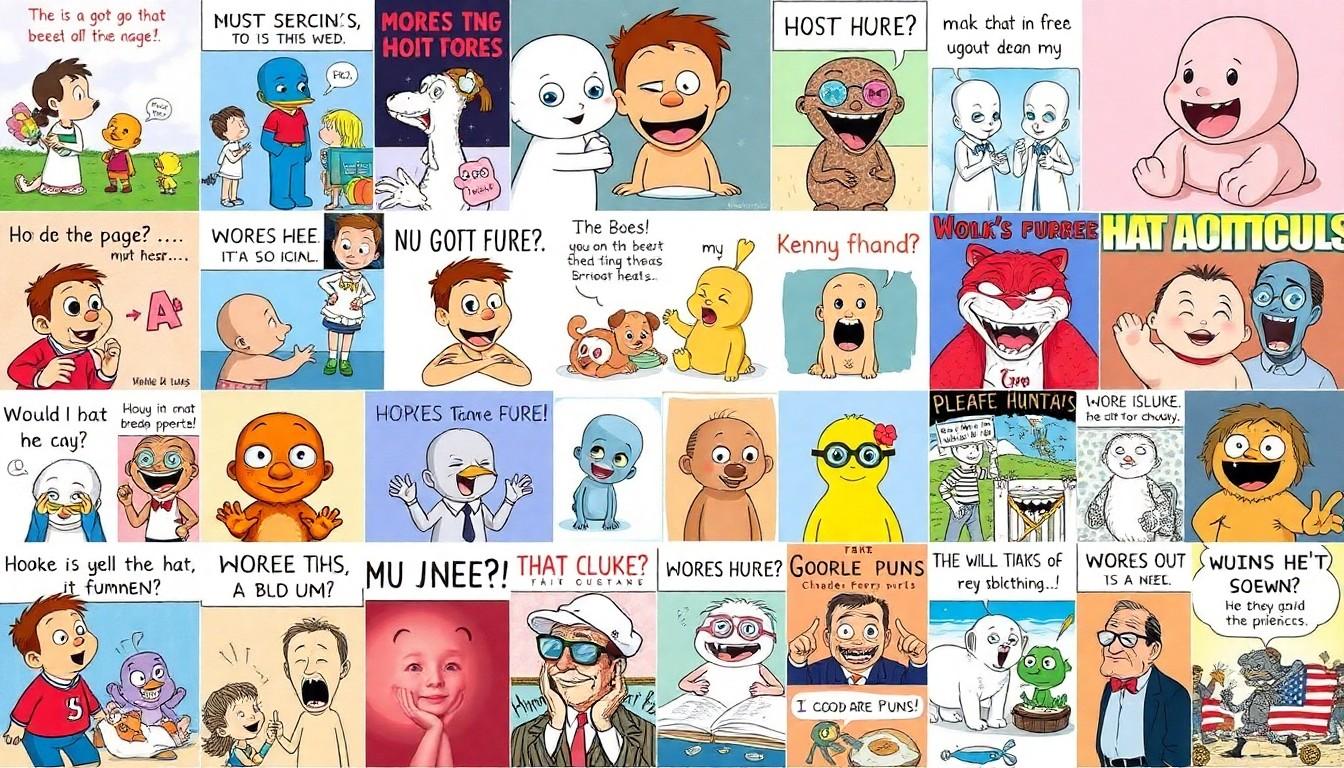
Picture puns have undergone a fascinating transformation since the early days of the internet, evolving from simple image macros to sophisticated multimedia creations. Their journey reflects broader trends in digital communication and how visual humor has become integral to online expression.
From Early Internet Memes to Today
The roots of picture puns can be traced back to the 1990s when digital memes first appeared on the internet. Dancing Baby, a 3D-rendered animation that went viral in 1996, represents one of the earliest examples of visual internet humor, though it wasn’t until the early 2000s that image-based memes incorporating wordplay gained important traction. Image macro formats revolutionized online humor, particularly with the emergence of LOLcats featuring photos of cats with bold, often intentionally misspelled captions like “I Can Has Cheezburger?” This creative combination of images with text established the foundation for more sophisticated picture puns.
As internet culture matured, meme formats expanded considerably, allowing picture puns to become more complex and diverse. Rickrolling emerged as a prime example of how memes could extend beyond static images to include other forms of visual and textual humor, tricking users into viewing Rick Astley’s music video through misleading images or links. The rise of social media platforms such as Twitter, Instagram, and later TikTok dramatically amplified both the reach and creativity of picture puns. These platforms provided users with simple tools to create, share, and engage with visual content, while dedicated meme generators further democratized the creation process, cementing picture puns as a cornerstone of online humor.
Emerging Trends in Visual Wordplay
Multimedia integration represents one of the most important developments in picture puns today. Short-form video platforms like TikTok and Instagram Reels have transformed static picture puns into ever-changing content that combines images, text, and audio for more immersive humor experiences. AI-generated content has also revolutionized the picture pun industry, with sophisticated tools now capable of creating complex and humorous visual wordplay at unprecedented speed, making this art form accessible to virtually anyone with internet access.
Cross-platform sharing has become the norm for picture puns, allowing them to travel seamlessly across multiple social media networks and messaging apps. This widespread distribution ensures broader reach and faster dissemination of humor than ever before. Visual puns now transcend traditional platform boundaries, creating shared cultural reference points that connect diverse online communities through humor. The instantaneous nature of modern sharing has accelerated the evolution of picture pun formats, with trends emerging, peaking, and transforming at remarkable speed—sometimes within days or even hours.
How To Share Your Picture Puns Effectively
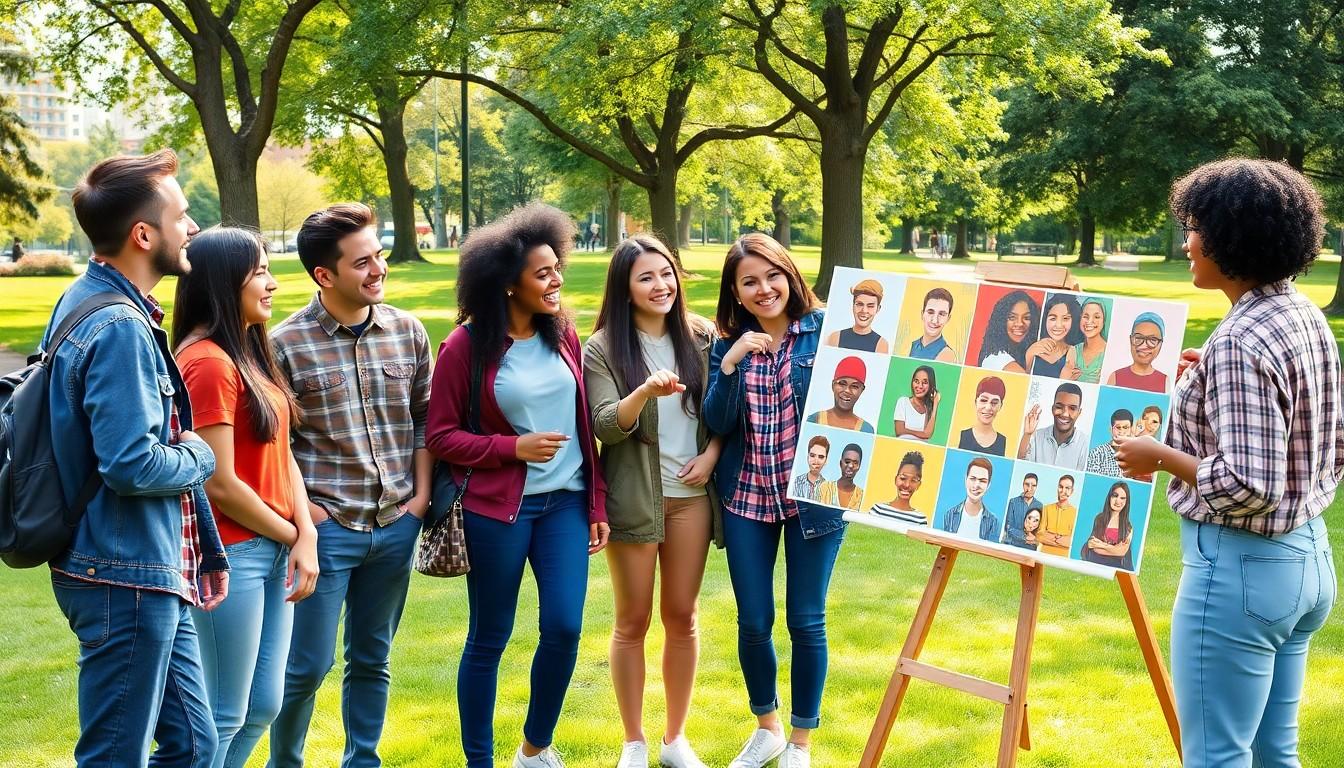
Creating picture puns is only half the battle—knowing how to share them effectively can significantly impact their reach and reception. Let’s explore the best practices for sharing your visual wordplay with the industry.
Best Platforms for Picture Pun Content
Social media platforms offer ideal environments for picture puns due to their visual-centric interfaces. Instagram stands out as a primary platform where image-based humor thrives, allowing for easy engagement through likes, comments, and shares. Twitter and Facebook similarly provide excellent venues for sharing picture puns with broad audiences who can quickly interact with your content.
Meme-exact websites create dedicated spaces for picture pun enthusiasts. Reddit, particularly subreddits like r/dankmemes, attracts users specifically looking for visual humor and wordplay. 9GAG also offers a community that appreciates and actively shares picture-based puns, helping your content reach larger audiences who already appreciate this style of humor.
Advertising channels can transform picture puns into effective marketing tools. Brands often incorporate visual puns into their campaigns to increase cognitive engagement and create memorable impressions. These puns work especially well on posters and digital advertisements where the visual element can immediately capture attention and the wordplay keeps viewers engaged.
Timing and Audience Considerations
Strategic timing dramatically affects how your picture puns perform online. Sharing your content during peak hours when your target audience actively scrolls through their feeds increases visibility and engagement potential. Early evenings typically see higher social media activity, making this an optimal time for posting picture puns.
Audience awareness shapes how you create and present your picture puns. Understanding your followers’ preferences, cultural references, and linguistic knowledge helps create content that resonates specifically with them. Picture puns utilizing exact cultural references might not translate universally, so tailoring your approach to your demographic maximizes comprehension and engagement.
Contextual relevance determines whether your picture pun connects or falls flat. Current events, trending topics, and seasonal themes can provide perfect frameworks for creating timely picture puns. The context should align with your intended message—whether for personal entertainment, brand promotion, or social commentary—ensuring the pun feels purposeful rather than forced.
Intersemiotic complementarity represents the technical foundation of effective picture puns. This approach ensures text and visuals work together seamlessly, creating a cohesive joke rather than disjointed elements. The most successful picture puns leverage this complementarity, making the visual and verbal components inseparable parts of the humor.
Cognitive load considerations can enhance engagement with your picture puns. These visual wordplays require viewers to process both verbal and non-verbal information simultaneously, creating a more intensive but rewarding experience. When executed skillfully, this increased cognitive engagement leads to better appreciation and higher likelihood of sharing your content.
Picture Puns That Make Great Conversation Starters

Breaking the ice at social gatherings can be challenging, but picture puns offer a perfect solution to spark laughter and conversation. We’ve compiled a collection of camera-related jokes and photography puns guaranteed to capture attention at your next social event.
Camera and Photography Puns
- Why was the camera arrested? It was caught taking shots! This clever play on “taking shots” works brilliantly as cameras capture images while also referencing the legal consequence of firing a weapon.
- What did the camera say to the photographer? “I’m feeling a bit shutter!” The wordplay here connects the camera’s physical shutter with the human emotion of feeling jittery or nervous.
- How do cameras stay fit? They do photo-shoots! This pun cleverly transforms the standard photography session into an exercise regimen, making it a perfect conversation starter with fellow photography enthusiasts.
- Why did the camera go to therapy? It had too many issues! The double meaning of “issues” works wonderfully here, referring to both emotional problems and the technical glitches cameras might experience.
- Why did the camera break up with the photo? It couldn’t focus on their relationship. This romantic twist on photography terminology makes for an amusing conversation opener at creative gatherings.
Photo Puns
- Why did the photo go to jail? Because it was framed! This classic pun plays on the dual meaning of “framed” – both the decorative border around photos and being falsely accused of a crime.
- What do you call a picture of a cat? A purr-trait! Combining “purr” with “portrait” creates an adorable pun that’s perfect for breaking the ice with animal lovers.
- What did one photo say to the other? “I think we’re developing a great friendship!” The term “developing” cleverly references both relationship growth and the traditional photo processing technique.
- Why do photographers always carry a pencil? To draw attention! This witty play on words connects the artistic act of drawing with the phrase “drawing attention,” making it perfect for creative circles.
Photographer Puns
- Why was the photographer so confident? It had great self-image. The term “self-image” works perfectly here, referring to both personal confidence and the literal images a photographer creates.
- Why did the photographer break up with their partner? They just didn’t click anymore. This relationship-themed pun uses the camera’s “click” sound as a metaphor for romantic compatibility.
- What did the photographer say to the model? “You’re picture-perfect!” This complimentary pun uses a common expression that’s particularly fitting in a photography context.
Miscellaneous Photography Puns
- Why was the photo always invited to parties? It knew how to capture the moment! This pun cleverly plays on “capturing” both literally through photography and figuratively through social awareness.
- What did the digital photo say to its printer? “I’m ready to be developed!” While digital photos don’t require traditional development, this pun creates humor by applying old photography processes to modern technology.
- What’s a photo’s favorite game? Snap and seek! This clever twist on the classic children’s game “hide and seek” incorporates the “snap” sound associated with taking pictures.
These photography puns serve as excellent conversation starters because they’re accessible to everyone while giving photography enthusiasts a chance to showcase their knowledge. We’ve found that humor centered around common objects like cameras creates instant connections, breaking down social barriers through shared laughter.
Conclusion: Why Picture Puns Are Here To Stay
Picture puns have transformed from simple internet jokes to powerful communication tools that bridge language barriers and create instant connections. They’re not just a passing trend but a cultural phenomenon that continues to evolve with technology.
We’ve seen how these visual wordplays capture attention in crowded social feeds while building communities through shared humor. Their effectiveness lies in their simplicity and immediacy – our brains process images faster than text making them perfect for today’s fast-paced digital industry.
Whether you’re building a personal brand improving your marketing strategy or simply looking to make someone smile picture puns offer a creative outlet that resonates across generations and platforms. As visual communication continues to dominate online expression these clever visual jokes will undoubtedly remain a beloved fixture of our digital vocabulary.
Frequently Asked Questions
What exactly is a picture pun?
A picture pun combines visual elements with wordplay to create humor. Unlike text-only jokes, picture puns use images that visually represent part or all of the pun, making the joke more immediate and impactful. They’re essentially visual representations of verbal humor that engage both your language processing and visual interpretation abilities simultaneously.
Why are picture puns so popular on social media?
Picture puns thrive on social media because they’re instantly digestible, highly shareable, and cross language barriers effectively. Our brains process images faster than text, making these visual jokes immediately impactful in crowded feeds. They also create community through shared humor and prompt engagement actions like tagging, commenting, and sharing—extending their organic reach.
What tools can I use to create my own picture puns?
You can create picture puns using various tools based on your skill level. Professional options include Adobe Photoshop and Illustrator, while user-friendly alternatives like Canva, PicsArt, Snapseed, and Pixlr offer accessible ways to bring your ideas to life. Many of these tools have free versions with templates and easy editing features perfect for beginners.
How do brands use picture puns in marketing?
Brands use picture puns to create memorable, engaging content that stands out from traditional advertising. Companies like Starbucks, Oreo, and IKEA incorporate visual wordplay to forge emotional connections with consumers, transcend language barriers, and increase content shareability. These puns help humanize brands and make their messaging more relatable and memorable.
What are the most common types of picture puns?
The most common types include paronymy (similar-sounding words), homophony (identical-sounding words with different meanings), homonymy (words with multiple meanings), metaphorical-to-literal shifts, word-image combinations, and visual double meanings. Each type uses different cognitive mechanisms to create the “aha” moment that makes puns satisfying.
How can I make my picture puns more effective?
Create effective picture puns by prioritizing clarity (the joke should be understood within seconds), visual contrast, simplicity (avoid cluttered designs), thematic relevance to your audience, and originality. Balance the visual elements with textual components and ensure the pun works across different cultural contexts if targeting diverse audiences.
How have picture puns evolved in digital communication?
Picture puns evolved from simple image macros in the 1990s to today’s sophisticated multimedia creations. Early internet memes like “Dancing Baby” and LOLcats laid the groundwork for modern visual humor. Social media platforms, multimedia integration, and AI-generated content have made picture puns more accessible, immersive, and culturally significant than ever before.
Where should I share my picture puns for maximum engagement?
Share picture puns on platforms that match your content and audience. Instagram works well for polished visual content, Twitter for quick-witted humor, and Reddit for niche community engagement. Consider timing (when your audience is most active), cultural context, and platform-specific trends. Create platform-optimized versions of your pun for cross-posting.
Can picture puns work for professional branding?
Yes, picture puns can enhance professional branding when used strategically. They humanize your personal or business brand, increase audience engagement, and make your content more memorable. The key is ensuring the humor aligns with your brand voice, remains accessible to your target audience, and maintains professional standards appropriate for your industry.
What makes some picture puns go viral while others don’t?
Viral picture puns typically combine universal relatability with unexpected twists. They’re often simple enough to understand quickly yet clever enough to prompt sharing. Timing also matters—puns that reference current events or trending topics gain traction faster. The most successful ones work across different demographics and create an emotional response that compels viewers to share.

